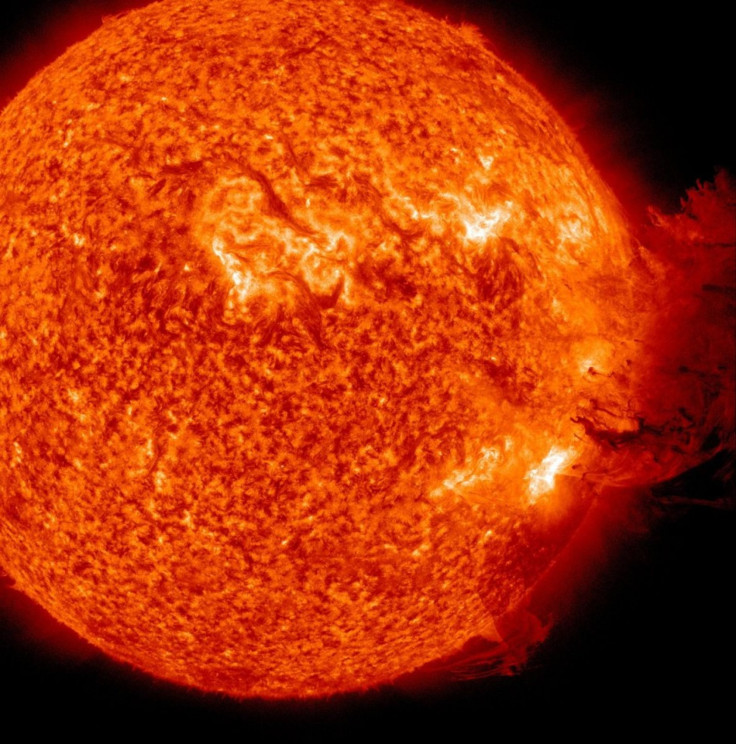Massive Solar Storm Could Cause Catastrophic Nuclear Threat in US

A severe solar storm could cause global chaos, wrecking satellite communications and would take down the most important power grids in the world for a period of years.
The National Oceanic and Atmospheric Administration (NOAA) forecasts four "extreme" and many "severe" solar emissions which could threaten the planet during the current decade. Nasa has warned that a peak in the sun's magnetic energy cycle and the number of sun spots or flares around 2013 could generate huge radiation levels.
This is a special problem in the United States and especially a severe threat in the eastern United States. Government studies showed that “extreme” solar flare emissions can cause blackouts for weeks, months or even years, in very large areas of the nation.
An extremely large solar storm would induce geomagnetic currents that could destroy a substantial fraction of the very largest transformers on the power grid. If this happened, electric power loss due to a large solar storm would be out for a period of years and possibly decades.
Last month, the Nuclear Regulatory Commission said that U.S. plants affected by a blackout should be able to cope without electricity for atleast eight hours and should have procedures to keep the reactor and spent-fuel pool cool for 72 hours.
Nuclear plants depend on standby batteries and backup diesel generators. Most standby power systems would continue to function after a severe solar storm, but supplying the standby power systems with adequate fuel, when the main power grids are offline for years, could become a very critical problem.
If the spent fuel rod pools at the country's 104 nuclear power plants lose their connection to the power grid, the current regulations are not sufficient to guarantee those pools won't boil over, exposing the hot, zirconium-clad rods and sparking fires that would release deadly radiation.
A recent report by the Oak Ridge National Laboratory discloses that over the standard 40-year license term of nuclear power plants, solar flare activity provides a 33 percent chance of long-term power loss. This is a risk far greater than most other natural disasters, including major earthquakes and tsunamis.
In 1989, a solar storm affected the power grid in Quebec, Canada, leaving roughly six million people without electricity for many hours. A storm of similar magnitude today could cause up to $2 trillion in damage globally.
A solar flare is caused when an intense burst of radiation comes from the release of magnetic energy associated with sunspots. Flares are the solar system's largest explosive events. A CME happens when the outer solar magnetic fields are closed, often above sunspot groups, and the confined solar atmosphere can suddenly and violently release bubbles of gas and magnetic fields.
The strongest solar storm on record is called the “Carrington Event,” which is named after Richard Carrington, who viewed and reported on the solar flare of Sept. 1. It occurred in late August and early September, 1859. From Aug. 28 through Sept. 4, aurorae of unusual brilliance were observed throughout the globe.
© Copyright IBTimes 2024. All rights reserved.





















